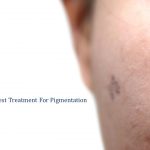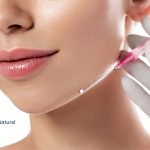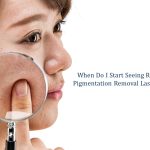Scarring is one of the most distressing issues of the skin as can be difficult to treat and leads to physical disfigurement with significant psychosocial impact. While there are many causes of scar formation, acne is one of the major causes to this.
There are many types of acne scars. Rolling acne scars are common which are formed from a result of the healing process of acne. Due to their wide size, they are more prominent and are difficult to hide.
In the following article, you can find everything you need to know about rolling acne scars and the available treatment options.
What Are Rolling Acne Scars?
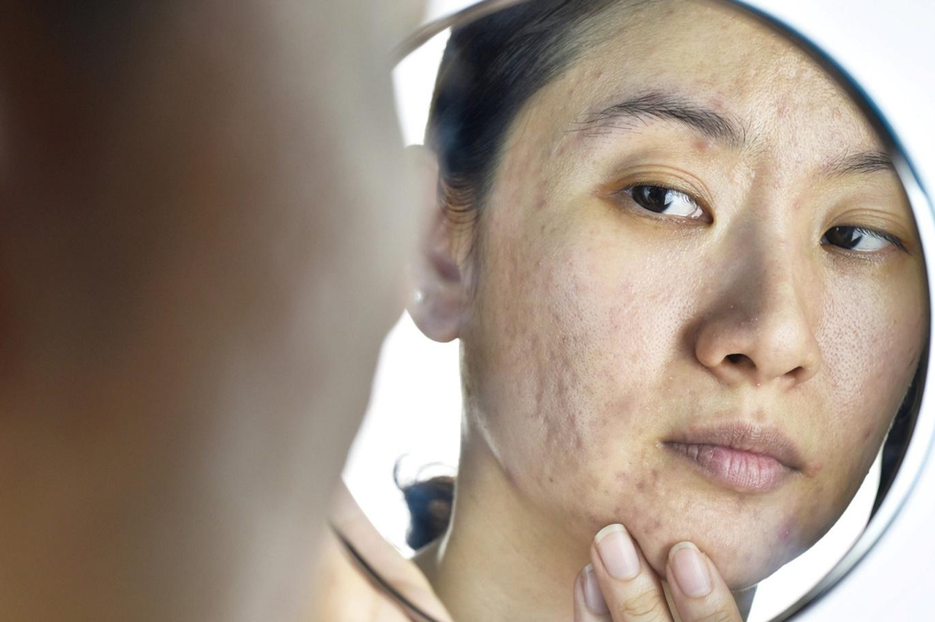
Acne is a common skin condition that, if untreated, often ends up leaving scar marks. Depending upon the type and severity of inflammation, acne can cause either a depressed (atrophic) or raised (hypertrophic and keloid) scarring of the skin. About 40% of the patients develop scar marks and most of them are atrophic scars.
Rolling acne scars are the widest type of atrophic acne scar marks that are formed when acne causes severe inflammation deep in the skin. These scar marks have rolling edges and may be as wide as 4 to 5 mm in diameter. In comparison with other forms of atrophic acne scars (Ice pick and Boxcar scars), rolling scars are relatively shallower.
How To Identify Rolling Scars?

You can identify rolling acne scars easily by their sloppy and sunken appearance. Unlike ice pick and boxcar scars, rolling scars do not have well-defined edges. Due to their rolling and slanting borders, they give the skin an uneven, undulating, and wavy appearance. They commonly manifest on thick facial skins like the lower cheeks and jawline. As they are wide, they are difficult to conceal.
What Causes Rolling Acne Scars?
The formation of rolling scars highly depends upon how your skin heals after acne. If your skin tends to scar easily, then there are more chances that you will develop rolling scars after your acne heals.
Besides, inflammation also plays a major role in it. More severe and deeper inflammation increases the risks of rolling scars; that’s why acne should be treated as soon as possible to avoid it.
Other factors that enhance the likelihood of rolling scars include;
- Pinching or squeezing the acne lesions
- Smoking
- Genetic
Can I Prevent Rolling Scars?
Here are a few tips for preventing rolling scars after acne;
- Do not attempt to pop or squeeze the pimples no matter how tempting it is.
- Treat acne as early as possible and get it under control.
- Stay hydrated, and keep your skin moisturized
Can I Heal Rolling Acne Scars With Home Remedies?
There are various over-the-counter skin products you can use at home for acne scars as described below. However, rolling scars are pits that are formed as acne heals. OTC topical remedies are not effective enough to completely treat these types of scar marks so you will also need some professional cosmetic treatments (discussed in the later section). However, following remedies can aid in fading the pigmentation and smoothening of acne scar marks;
AHA/BHA Solutions
AHA/BHA solutions contain alpha and beta hydroxy acids as active ingredients which have exfoliating properties. They not only slough off the dead skin cells but also increase the cell turnover.[1] This in turn refines the complexion and lightens up the scar marks.
Lactic Acid
Lactic acid also owns exfoliating and keratogenic (epidermal growth-inducing) properties. As compared to hydroxy acids, lactic acid is a milder exfoliant that removes dead skin cells without disrupting the pH of the skin or causing any redness or irritation.[2, 3] So, lactic acid can be used to improve the appearance and complexion of pigmented scar marks in sensitive skins.
Vitamin C
The topical application of vitamin C-containing products also helps in removing post-acne scar marks. Like retinol, Vitamin C lightens up the scar marks and boosts the production of collagen which then helps in rebuilding clear and smooth skin.
Alpha Arbutin
Alpha arbutin can inhibit the activity of the enzyme tyrosinase, responsible for producing melanin pigment in the skin and making scar tissue more prominent. Thus, it helps in fading the pigmentation of acne scars.
Available Clinical Treatments For Rolling Scars
Several treatment options are available for treating rolling acne scars as described below;
Laser
Laser therapy helps in the removal of most types of acne scars including rolling scars. Several types of lasers are used in this regard. The most common ones are;
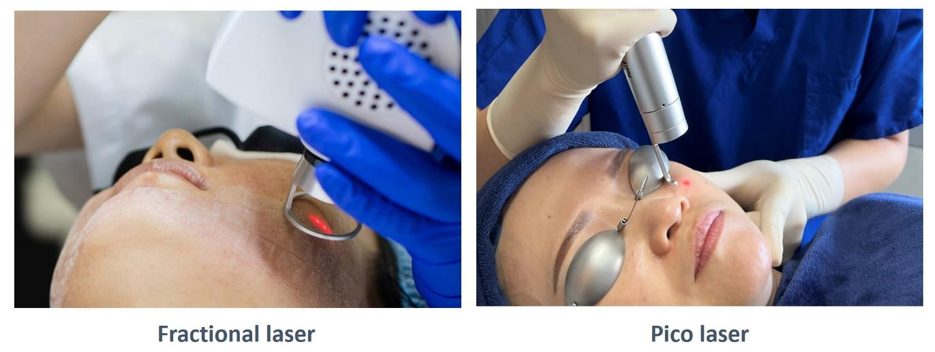
In fractional laser technology, heat energy is fired onto the scar tissue in a controlled, short-pulsed manner. The heat of the laser separates the superficial layer of the skin in the region where scarring is more prominent. This skin layer later peels off on its own, and newer skin cells take their place on the surface. The laser light also promotes the regeneration of underlying skin tissue leading to a smoother and more balance skin tone.
Pico laser technology, on the other hand, uses laser energy that is fired on the scar tissues at 1 trillionth (pico) of a second. The photoacoustic energy not only lightens the scars by destroying the pigmented cells of the scar tissue but also triggers the skin’s natural healing process. More production of collagen in turn leads to the remodeling and repairing of the scar tissue. This smoothens the skin texture and leads to a more even complexion over time.
Dermal Fillers
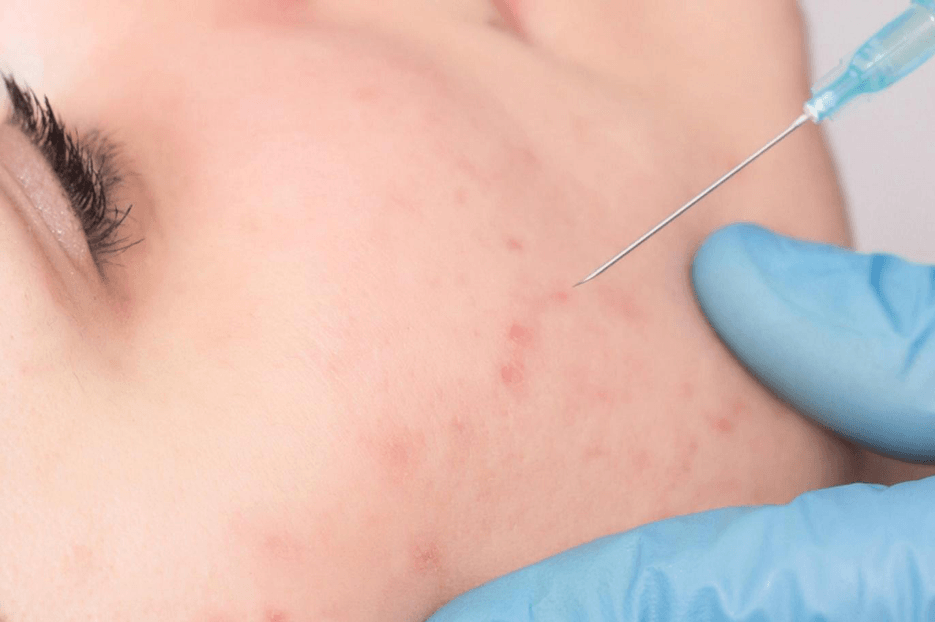
Dermal fillers contain substances like hyaluronic acid, which are injected superficially under the skin to treat acne scars. Fillers are formulated to provide volume to the deficient areas of the skin. So, when they are injected into the region of scar tissues, they decrease the depth of rolling scars and smoothen out the depressions.
Moreover, some fillers can stimulate collagen production which further improves the appearance of deeper scar marks, like rolling acne scars.
Many different types of dermal fillers are available in the market but the most popular ones for the treatment of acne scars include those containing Hyaluronic acid (HA), Poly-L-Lactic Acid (PLLA), etc.
They are generally safe and effective in treating rolling scars with minimal risks of side effects; however, the results are not permanent and you will need to undergo filler treatments every few months to maintain the results.
Subcision
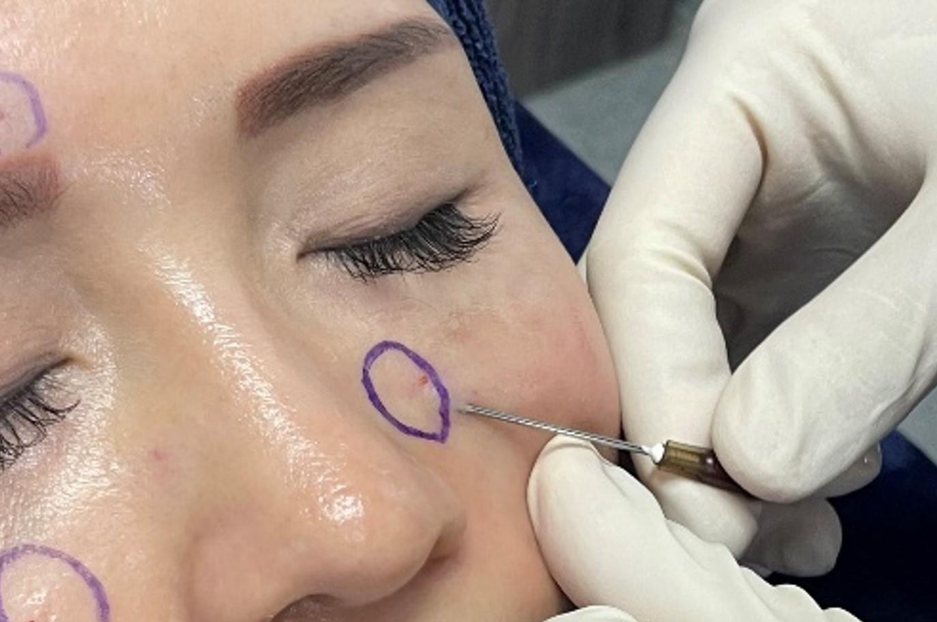
Subcision is another method by which rolling acne scars can be treated. In this procedure, the fibrous bands or tethers underneath the depressed acne scars are broken down.
These fibrous bands are formed during the healing process of acne and create a downward pull on the skin leading to depressed or pitted acne scars. Subcision releases this physical “pull”, flattens the depressions, and makes the skin smooth again.
However, subcision is usually done in conjunction with other collagen-stimulating treatments, like a laser, for optimal results.
RF Microneedling
RF Microneedling system uses ultrafine microneedles with radiofrequency technology to effectively remove acne scars. The microelectrodes create an electromagnetic field that transmits the desired amount of thermal energy selectively into the deeper layers of the skin without damaging the superficial tissues.
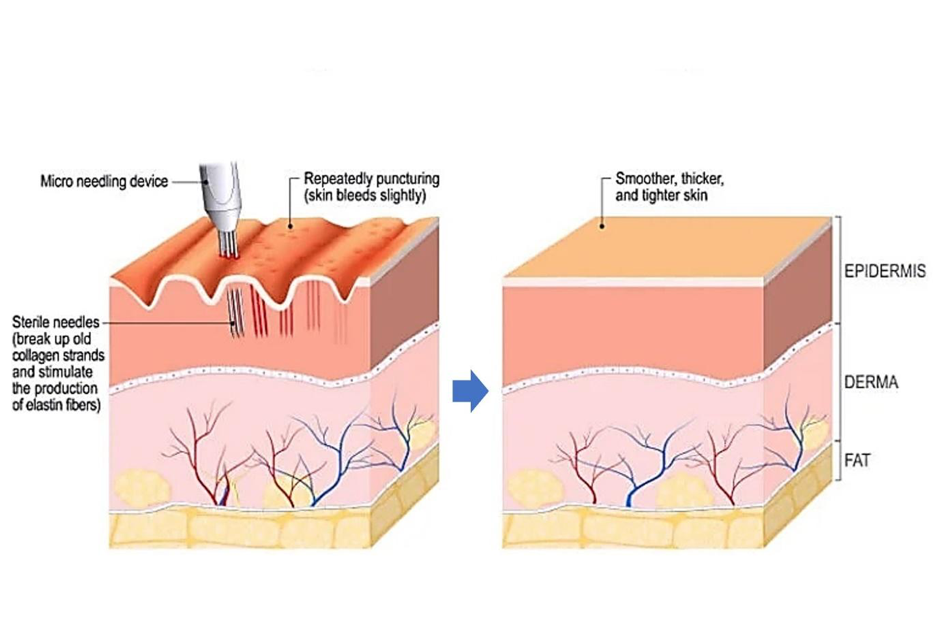
The radiofrequency energy softens the scar tissue by breaking down the cellular and fibrous bands. It also stimulates the fibroblasts to produce more collagen and elastin which in turn makes the skin smooth and elastic. Moreover, RF micro-needling repairs the skin’s basement membrane and promotes skin health and the recovery process. All these effects collectively improve the appearance of rolling acne scars.
The results of RF micro-needling are permanent; however, you will need a series of sessions to attain the optimum benefits.
Chemical Peeling
Chemical peels, also known as derma peeling, work by removing the top layer of skin, and help in rejuvenation by stimulating the newer skin cells to rise to the superficial layers and take their place.
Chemical peeling lightens the dark spots, smoothens the tone and texture of the skin, and also unclogs the pores preventing future acne breakouts. So, chemical peels is one of the option for treating less severe rolling acne scars.
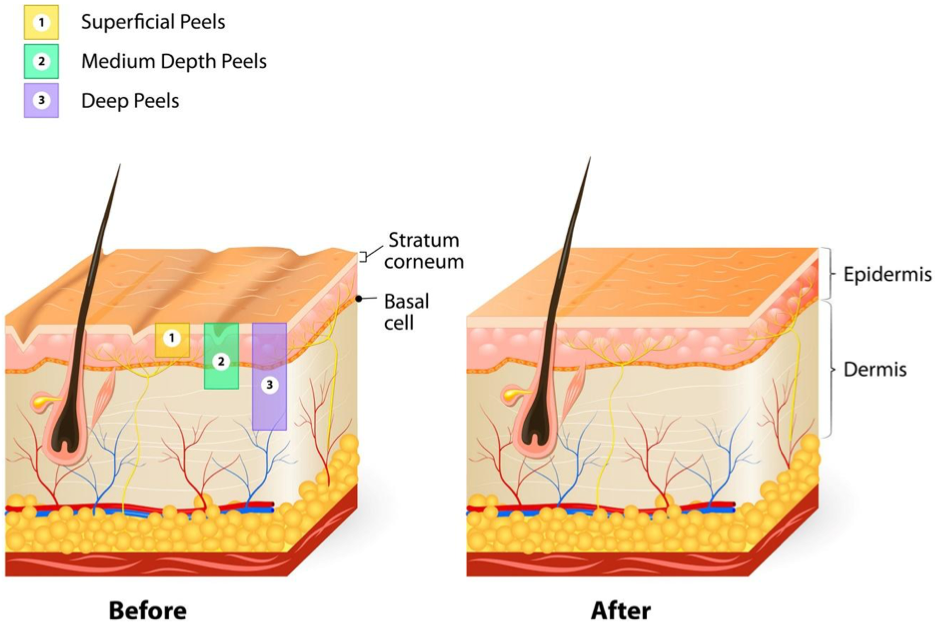
Commonly used chemical peels for removing rolling acne scars are:
- Phenol
- Trichloroacetic acid
- Glycolic acid
- Lactic acid
- Salicylic acid – etc
Microdermabrasion
Microdermabrasion is also being used for treating rolling acne scars. It involves the use of a small handheld device that sprays extremely small crystals on the surface of scar tissue. The tiny crystals act as exfoliators and remove the superficial dead layer of skin, creating smoother and more even skin.
Microdermabrasion works only on shallower acne scars like rolling scars. Deeper scar marks including icepick and boxcar scars cannot be treated with this surface-level procedure.
Bottom Line
Rolling acne scars are a common and distressing skin condition that not only affects facial aesthetics but also imparts psychosocial effects. These pitted scars are formed due to severe and untreated acne and make the skin uneven and pitted. You can treat rolling acne scars at home with exfoliators and collagen-boosting skincare products. Other effective available treatment options include lasers, dermal fillers, RF micro-needling, subcision, chemical peeling, microdermabrasion, etc.
About Dream Aesthetics and Plastic Surgery
Bespoke surgical for cosmetic or medical reasons is what Dream covers to bring out the beauty in every individual. Going beyond the aesthetics and working on physical anomalies are what we value the most in leading our patients to cherish self-improvement and confident lifestyles.
Derived from Associate Professor Vincent Yeow’s long-standing experience performing plastic surgery in Singapore, our treatment plans deliver physical remodelling in our patients’ favour. One of the notable remodellings is droopy eyelid correction. The ptosis surgery used for treatment eventually fixes drooping eyelids, improves vision and enhances appearance.
Most importantly, as a trustworthy plastic surgery and aesthetic clinic, we treasure positive and natural outcomes for each individual. We will ensure to deliver the beauty refinement of your dream without compromising your safety and privacy.




